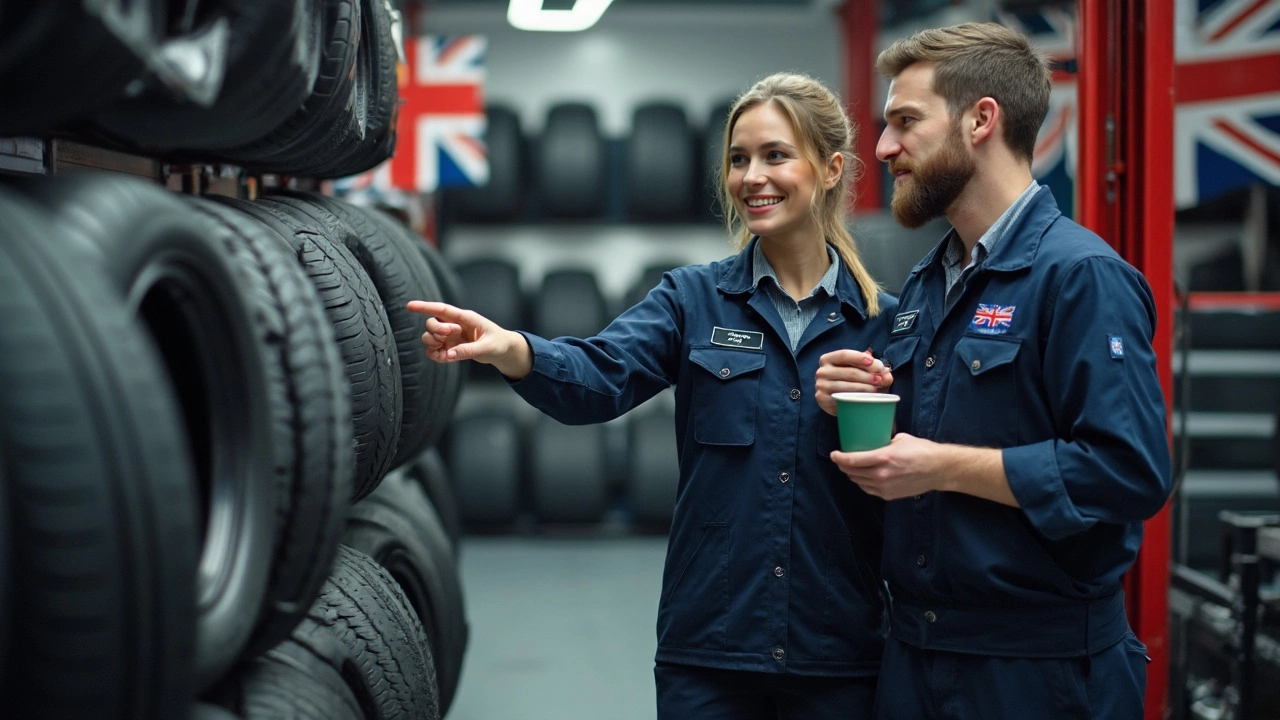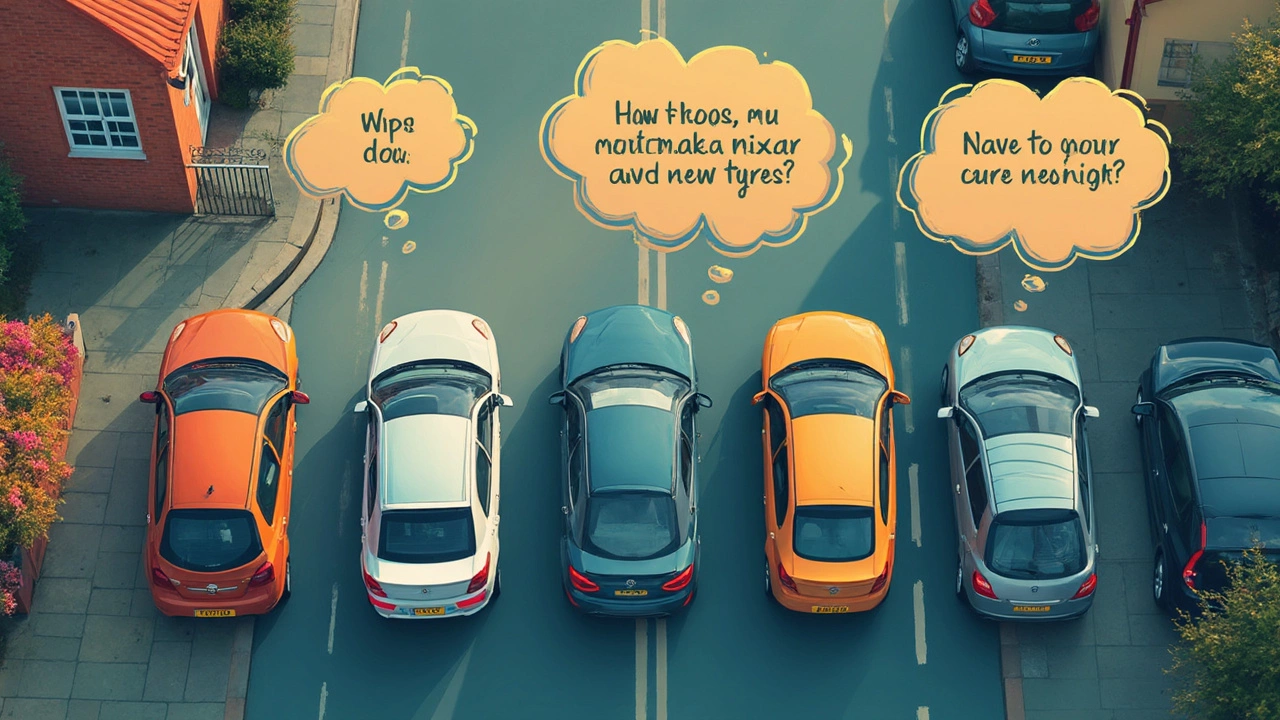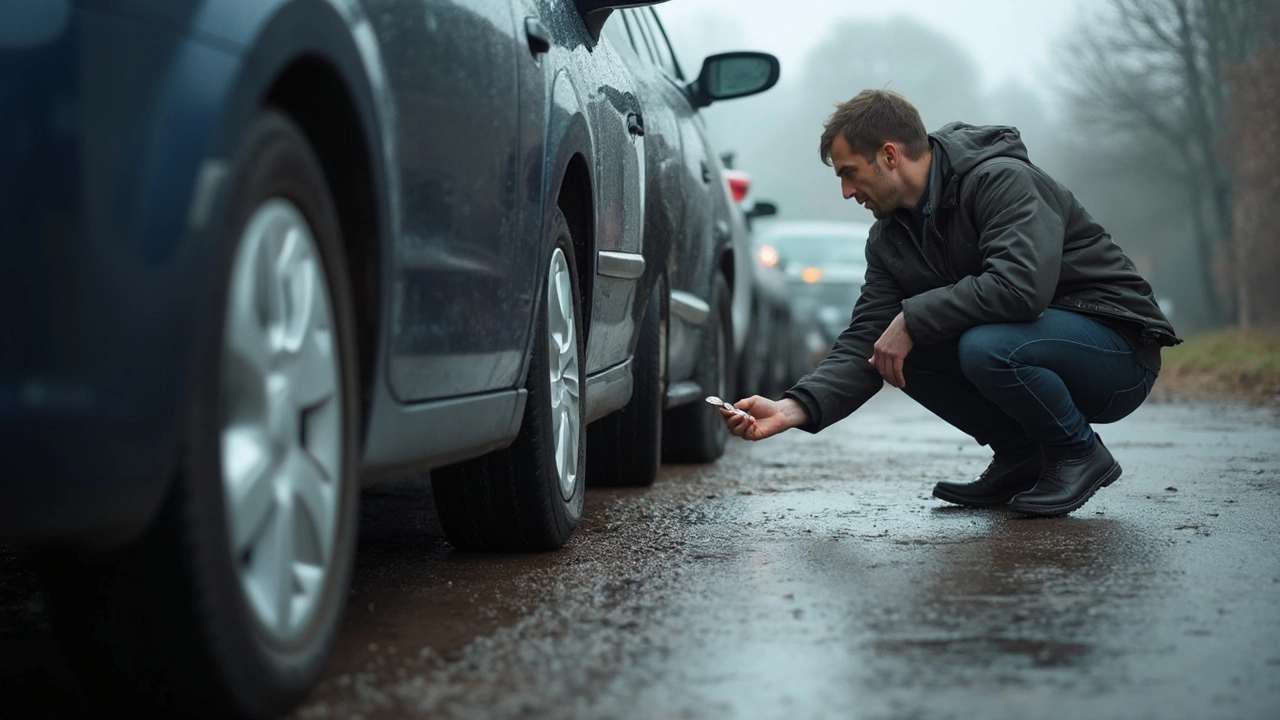You walk out to your car, spot a worn-out or busted tire, and your brain goes straight to the wallet—am I about to pay for all new tires, just because of one? It feels like tire shops always push for all four, but is that actually necessary? Here’s what’s really going on when just one tire is toast.
Car tires aren't just pieces of rubber; they connect your car to the road and keep things safe when turning, stopping, or dodging potholes. If you swap in a single new tire with three that have seen years of action, you can mess with how your car handles. You probably won’t feel it right away, but uneven grip and rolling size can throw off traction, especially if your car has all-wheel drive (AWD) or traction control. That’s not some scare tactic—it’s how the car’s systems read the road.
- Why One Bad Tire Is More Complicated Than It Looks
- What Happens When You Mix Old and New Tires
- When You Can Safely Replace Just One Tire
- Why Some Shops Insist on Replacing All Four
- Simple Tips to Make Your Tires Last Longer
Why One Bad Tire Is More Complicated Than It Looks
You’d think if one tire is shot, you could just swap it out and move on. But there’s more going on under your car than most folks notice. That “one bad tire” can throw off things you don’t even see until it becomes a problem.
Modern cars rely on computers that pay attention to everything from wheel speed to grip. If you add a brand-new tire with deep tread to a set of old, worn-down tires, you didn’t just swap rubber. New tires are a little taller, which means their rolling circumference is bigger. This makes them spin slower than the worn ones. That difference messes with traction control and—if you drive all-wheel drive—even the way power gets balanced between wheels. Some AWD systems can freak out if there’s just a half-inch difference in tire height. That’s why Subaru, for example, straight up says in their manuals that all tires need to stay within 2/32” tread depth of each other.
Even with *front-wheel drive* or rear-wheel drive, mixing a single new tire in with three old ones can lead to wonky handling. The car might pull a little in corners. In wet or snowy conditions, that extra tread can grip differently, so you might notice the car reacting weirdly if you have to brake hard or turn quickly. It doesn’t sound like much, but in a panic stop, every bit of grip and predictability matters.
Some folks think they’ll save money by just fixing the one tire, but problems can start stacking up. If you have tire pressure monitoring sensors, confused speeds from the different tires can trigger dashboard warnings. Plus, uneven tires can wear out new suspension bits faster. So, replacing a single tire rarely solves everything—it just moves the problem around. That’s why most tire shops look at the bigger picture of tire replacement instead of just fixing what’s blown.
What Happens When You Mix Old and New Tires
Let’s say you slap a brand-new tire on your car and keep the rest as they are. The fresh tire has deeper tread, probably handles water better, and is slightly bigger overall compared to your worn-out ones. Here’s where things get interesting. When tires spin, their rolling diameter—the distance they cover in one turn—matters. Old tires wear down and get a bit smaller, while the new tire keeps full height. If you mix one taller tire with three shorter ones, your car can get a little confused, especially if you have ABS or AWD.
All-wheel drive (AWD) cars are especially picky. The drivetrain expects all tires to be close in size, and if one spins faster or slower, it can throw off expensive parts like the differential. Even a 1/4-inch difference in tread depth can lead to thousands in repairs. For two-wheel drive cars, the big risk is the car handling weird, like pulling to one side, or traction control not kicking in as it should.
If you’re swapping just one, pay attention to where you put it. Mounting a single new tire with deeper tread on the front axle can sometimes make the car slide in wet conditions, since the rear tires can lose grip first. Most pros recommend putting new tires on the back if you’re only getting two, to help prevent spinouts.
| Tire Condition | Rolling Diameter | Key Issues |
|---|---|---|
| Brand New | Full height | Best grip, more water channeling |
| Worn (50% tread or less) | Slightly smaller | Less grip, handles water worse, throws off AWD |
| Mix of Old and New | Uneven heights | Drivetrain stress, handling changes, safety risk |
This isn’t hype—it’s real. Bridgestone and other major tire makers even state that on AWD, mismatched tires can void parts of your warranty. So before you buy just one, check how much tread is left on the others. If three are close to worn out, it’s usually safer and cheaper long-term to replace all four.
If you drive a regular front- or rear-wheel drive car and the other tires are still in good shape (let’s say within 2/32" tread depth of each other), you can sometimes get away with replacing one or two, but ask the shop to match brands and patterns as closely as possible. Mixing different kinds or levels of wear can mess up both safety and how the car feels on the road.
The bottom line? When it comes to tire replacement, mixing old and new can lead to a lot more headaches than just shelling out for a full set up front.

When You Can Safely Replace Just One Tire
Sometimes, you really don’t have to swap out every tire on your car. But there are a few things that have to line up for it to actually be safe—otherwise, you risk weird handling or even damage to your car’s systems. Let’s break down when it’s truly okay to replace just one tire and not the whole set.
- Tread Depth: The new tire and the others have to have almost the same tread. Aim for a difference of no more than 2/32” (that’s about the thickness of a nickel). If your existing tires still have a lot of life left, you’re probably good to go with just one replacement. If they’re close to bald, it’s time to look at a pair—or all four.
- Same Model & Size: Don’t mix and match brands or types. Always use the same make, model, and size as the rest, so everything rolls the same way and the car’s computers don’t get confused.
- Front-Wheel Drive (FWD) or Rear-Wheel Drive (RWD): Most cars on the road are one or the other—these are a little more forgiving than all-wheel drive. You can often replace just one tire if the above points are covered.
Here’s a quick look at when you can safely change just one tire versus when you shouldn’t:
| Situation | One Tire OK? | Why / Why Not |
|---|---|---|
| Other tires have 80-90% tread left | Yes | Tread is nearly identical. No big handling issues. |
| Front-wheel drive, matching brand/size/model | Yes | As long as tread is close, one tire won’t hurt. |
| All tires half worn or more | No | Big difference in grip and rolling diameter. Adds stress, especially on AWD cars. |
| All-wheel drive (AWD) car | Usually No | AWD systems are picky. Difference in tire size can wear out expensive parts fast. |
Don’t just take the tire shop’s word for it. Grab a tread depth gauge (they’re cheap) and check those numbers yourself. Remember, if you end up needing a pair, always put the new tires on the back—no matter what kind of car you drive. You’ll get better wet traction and more stability, especially in emergency moves.
One last tip: road hazard warranties can be a lifesaver here. Some tire brands cover free replacement if you destroy a tire in the first year or even offer prorated discounts. It’s worth asking, especially if cash is tight and you want to avoid buying a whole set over one lousy nail.
Why Some Shops Insist on Replacing All Four
If you’ve ever gone in with just one bad tire, you’ve probably heard the pitch: “You really should replace all four.” Sounds a little fishy, right? Here’s the deal—there’s actually some legit reasoning behind it, especially for certain cars and situations.
First, car makers like Subaru and Audi are crystal clear in their manuals: if you drive an all-wheel drive (AWD) car, the tires all need to be nearly the same in size and tread. Even a difference as small as 2/32 of an inch can mess with the AWD system. This isn’t just about grip; AWD systems have gears and sensors tuned for matching *rolling diameter*. Mismatched tires can cause the system to overwork, which can burn out the center differential—basically a $1,200 to $2,000 problem you don’t want.
Here's what makes tire shops go so hard on replacing all four for certain vehicles:
- Tire replacement on AWD and 4WD: Most modern AWD and 4WD vehicles are sensitive to even tiny differences in tire size. Shops play it safe to protect you from bigger repair bills down the road.
- Traction control and ABS–tuned cars: Newer cars rely on computers to read each tire’s speed for anti-lock brakes and traction control. Different tire sizes can trip up these systems and set off warning lights.
- Warranty: If you don’t swap all four as the manual says, you can kiss your drivetrain warranty goodbye if there’s ever a related failure. It’s the car companies, not the tire shop, making the rule here.
Some shops also want to avoid future complaints from customers who come back after mixing new and old tires. For them, it’s better business to stick to what the automaker recommends, rather than gamble with repairs or blame games later.
Here’s a quick breakdown showing why shops might say all-four replacement is the move:
| Car Type | All Four Tires Needed? | Main Reason |
|---|---|---|
| AWD/4WD | Usually Yes | Protects drivetrain and warranty |
| Front-Wheel Drive | Sometimes | Balance handling and even grip |
| Rear-Wheel Drive | Rarely | Mostly for performance and wear |
Pep Boys, Discount Tire, and Firestone all push for matching sets, especially with AWD. On top of that, the National Highway Traffic Safety Administration has mentioned mismatched tires as a factor in lost control crashes. Shops are thinking about liability, not just sales.
The main thing is, they’re usually not just looking for a bigger sale—they’re following the book to keep you safe and avoid future headaches.

Simple Tips to Make Your Tires Last Longer
It’s frustrating to shell out for new tires more often than you should. But a few easy habits can stretch out your tire life—and save you real money down the road.
- Check your tire pressure every month. When your tires run too low or too high, they wear out faster and can mess with your car’s gas mileage. Most folks only notice tire pressure when the dashboard light pops up, but by then you’ve probably lost some tread. Aim for the numbers on your driver’s door sticker, not what’s printed on the tire.
- Rotate your tires at every oil change, or at least every 6,000 to 8,000 miles. This helps keep wear even, especially on front-wheel drive cars where the front tires work the hardest. Some tire shops will even rotate them for free if you bought your tires at their store.
- Get your wheels aligned once a year or if you’ve hit a good-sized pothole. Bad alignment chews through tire tread fast—you’ll spot it if your steering wheel pulls to one side or if tread is wearing unevenly across the tires.
- Avoid hard stops and burnouts. Quick braking or jackrabbit starts might feel fun, but they eat up tire tread super fast. Easy on the gas and brakes gives your tires a longer shot at a full life.
- Try not to overload your car. Carrying too much weight (think heavy tools, construction gear, or hauling big stuff) can put extra stress on your tires and cut their life short. If you haul a lot, check your car’s weight limits in the manual.
One cool fact: Tire experts say that most tires sold in the U.S. lose about one pound of air per month, even without leaks. So if you haven’t checked in a while, chances are you’re already a bit under. Paying attention to these basics will help your tire replacement money go further and keep your drives safer, too.

